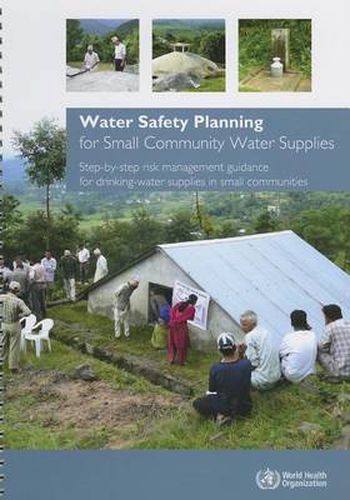Readings Newsletter
Become a Readings Member to make your shopping experience even easier.
Sign in or sign up for free!
You’re not far away from qualifying for FREE standard shipping within Australia
You’ve qualified for FREE standard shipping within Australia
The cart is loading…






This manual is designed to engage, empower and guide communities in the development and implementation of water safety plans (WSPs) for their drinking-water systems. It provides guidance on how to apply effective and achievable management actions in order to improve the safety and quality of supplied water. Relevant to all community-managed systems, it is applicable to piped schemes, point sources such as hand pumps, protected springs or household rainwater harvesting systems and other sources. The guidance provided is valid for both new and existing schemes. The manual is complemented by the World Health Organization’s (WHO) Guidelines for drinking-water quality (WHO, 2011a), which describe the principles of the WSP approach, and the Water safety plan manual: step-by-step risk management for drinking-water suppliers (Bartram et al., 2009), a practical guide to developing WSPs for larger water supplies managed by a water utility or similar entity. Tools (e.g. sanitary inspection forms) included in Volume 3 of the WHO Guidelines for drinking-water quality, entitled Surveillance and control of small community supplies (WHO, 1997), will also be a useful resource for small community water supplies throughout the WSP development and implementation process.
$9.00 standard shipping within Australia
FREE standard shipping within Australia for orders over $100.00
Express & International shipping calculated at checkout
This manual is designed to engage, empower and guide communities in the development and implementation of water safety plans (WSPs) for their drinking-water systems. It provides guidance on how to apply effective and achievable management actions in order to improve the safety and quality of supplied water. Relevant to all community-managed systems, it is applicable to piped schemes, point sources such as hand pumps, protected springs or household rainwater harvesting systems and other sources. The guidance provided is valid for both new and existing schemes. The manual is complemented by the World Health Organization’s (WHO) Guidelines for drinking-water quality (WHO, 2011a), which describe the principles of the WSP approach, and the Water safety plan manual: step-by-step risk management for drinking-water suppliers (Bartram et al., 2009), a practical guide to developing WSPs for larger water supplies managed by a water utility or similar entity. Tools (e.g. sanitary inspection forms) included in Volume 3 of the WHO Guidelines for drinking-water quality, entitled Surveillance and control of small community supplies (WHO, 1997), will also be a useful resource for small community water supplies throughout the WSP development and implementation process.